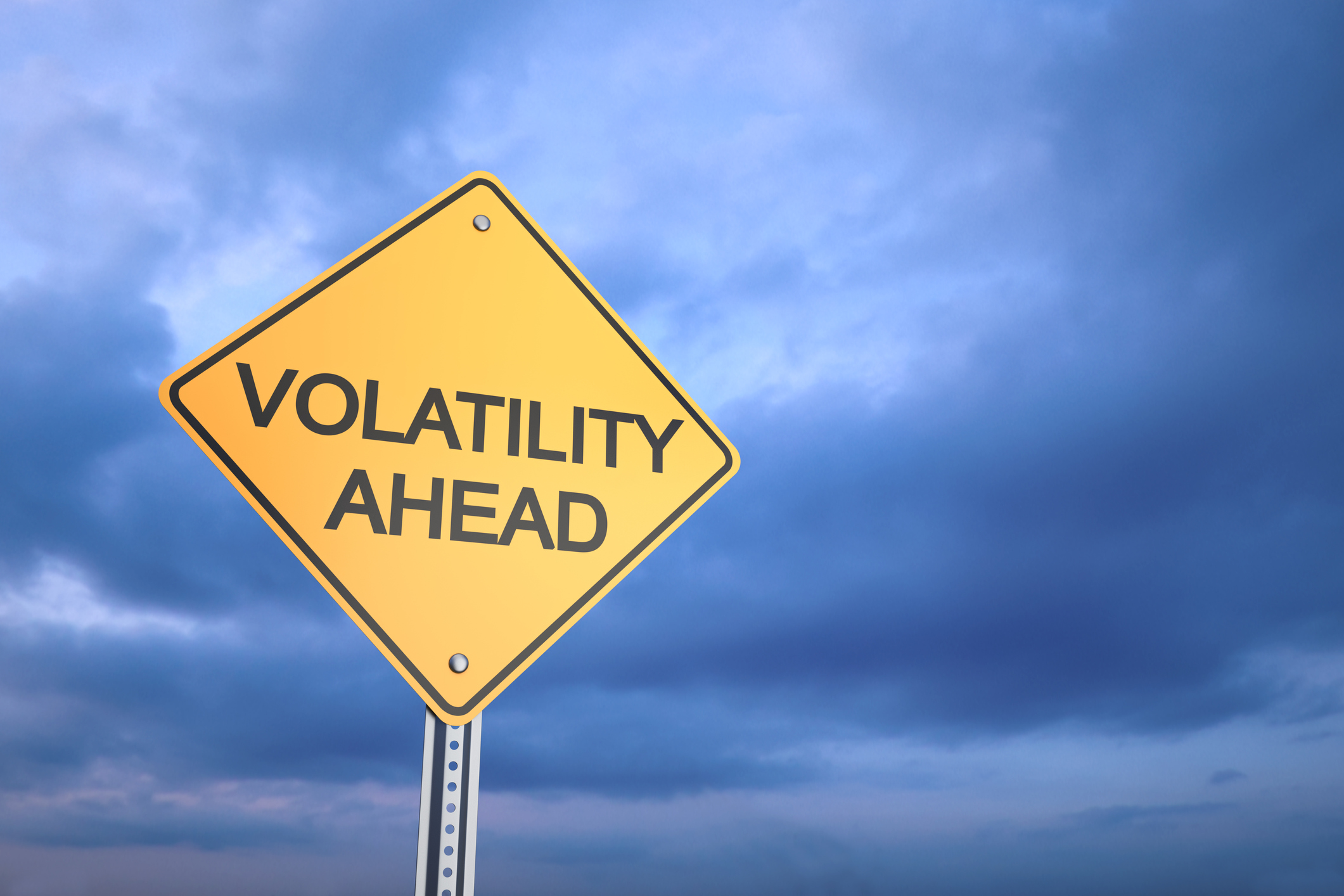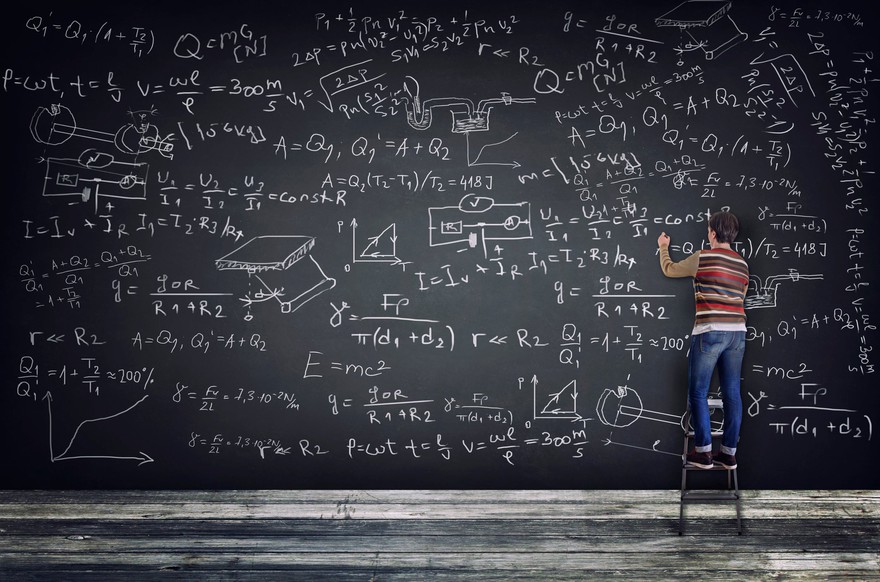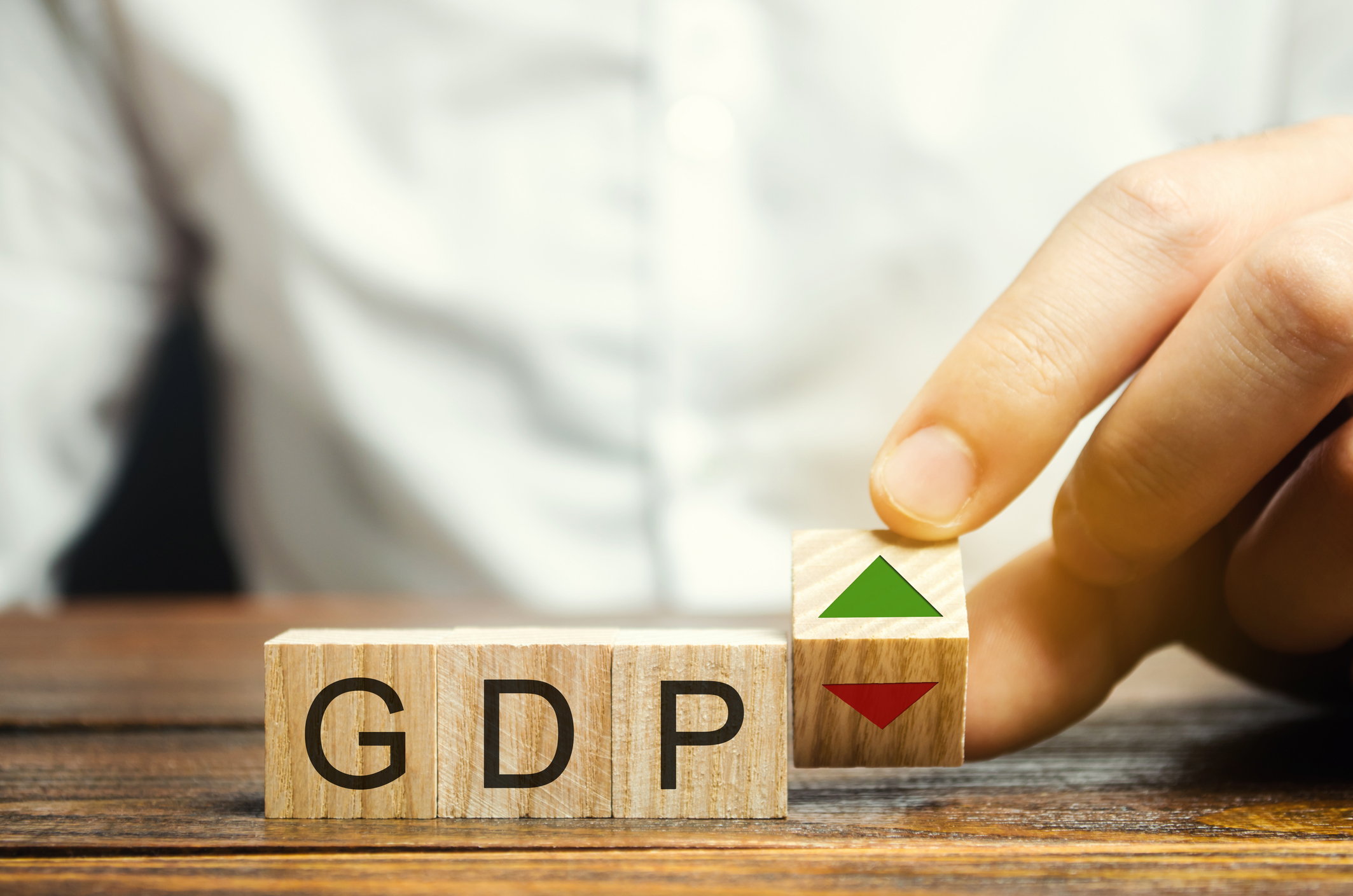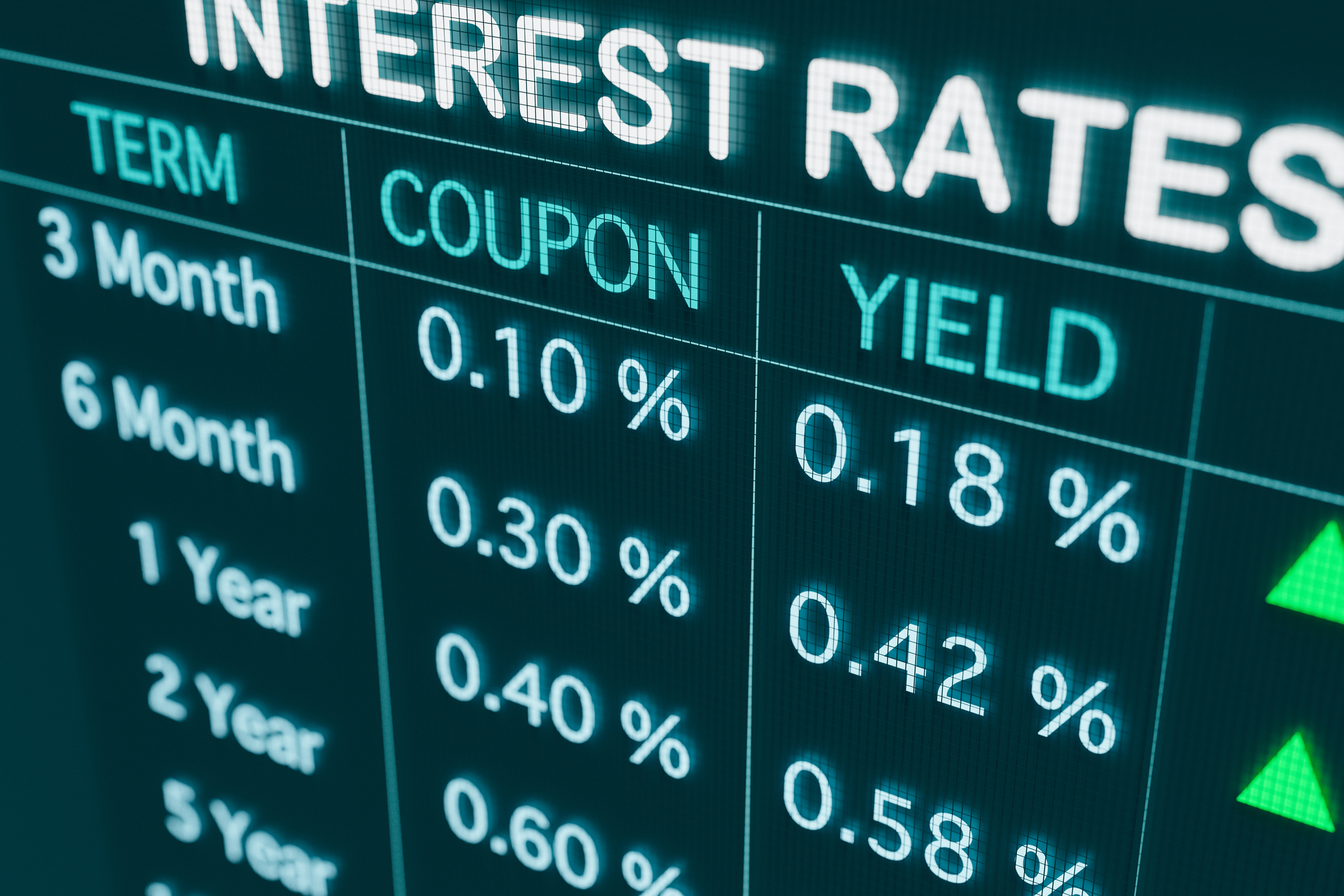To calculate the break-even interest rate, you need to know the yields to maturity and the number of years left before the bonds mature. Take each bond's yield to maturity, add one to the yield, and then use an exponential calculation, raising the sum to the power of the number of years before maturity.
You'll have two results: one for the longer-term bond and one for the shorter-term bond. Divide the longer-term bond result by the shorter-term bond result, and then do another exponential calculation, raising the number to the power of one divided by the difference in years of the two maturities. Subtract one from the result, and that gives you the break-even interest rate.
An example will make this clearer. Say you can invest in a five-year bond yielding 2% or a 10-year bond yielding 3%.
- To calculate the break-even interest rate, take (1 + 0.02) ^ 5 for the five-year bond and (1 + 0.03) ^ 10 for the 10-year bond.
- The resulting numbers are 1.10408 and 1.34392, respectively.
- Divide 1.34392 by 1.10408 to get 1.21723, and then take 1.21723 ^ (1 / (10-5)) to get 1.04010.
- Subtract one, and the final break-even interest rate is 4.01%.
This means that, in five years, you'd have to be able to buy another five-year bond yielding 4.01% in order to do as well as you would have compared to the 10-year bond at 3% now.



















